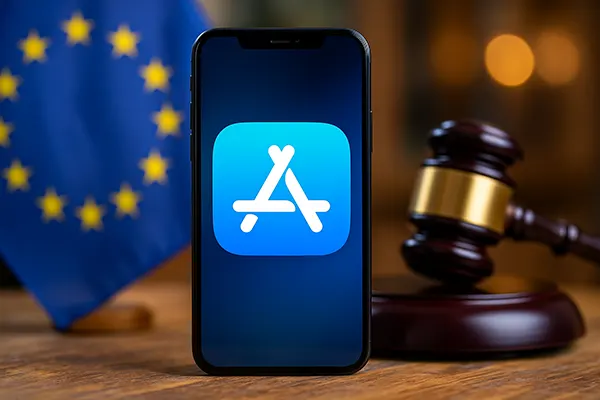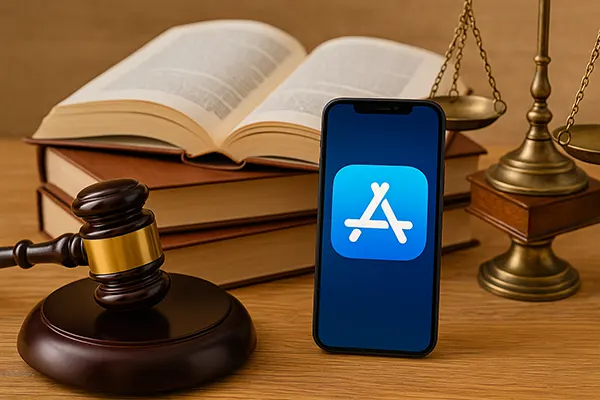
What Will the App Store Look Like in Five Years: Forecast Based on EU and US Legislation
Over the past decade, digital marketplaces have transformed significantly under pressure from regulators, developers, and users. With the European Union’s Digital Markets Act (DMA) and the evolving antitrust landscape in the United States, the App Store—Apple’s gateway to apps—faces radical changes. In the next five years, these transformations are expected to redefine how apps are distributed, monetised, and controlled.
Changing Regulations: The Role of the EU’s Digital Markets Act
As of 2025, the EU’s DMA is already in effect, forcing Apple to open its ecosystem to alternative app stores and payment systems. This breaks the long-standing monopoly Apple has had on iOS app distribution. Developers can now offer apps directly to users without using the traditional App Store, which significantly reduces Apple’s commission-driven revenue.
Furthermore, the DMA obligates Apple to provide interoperability and more transparent app moderation policies. This means fewer app removals without cause, clearer explanations to developers, and more freedom for users in choosing where and how to download applications.
While Apple has started compliance efforts—like enabling sideloading in the EU—analysts expect full adaptation by 2026. These steps are setting the standard for global digital markets, with other jurisdictions likely to follow.
Impact on App Distribution Models
The traditional model where developers submit their apps to a centralised store is becoming obsolete in regions governed by the DMA. Alternative distribution hubs are expected to emerge, tailored to different types of users—whether for games, professional tools, or region-specific needs.
This shift also means that users will likely see greater variety, but they’ll also have more responsibility in terms of privacy and data protection. As alternative stores arise, their compliance with GDPR and cybersecurity standards will be critical for user safety.
Developers, especially smaller studios, will benefit from lower barriers to entry and fewer restrictions, allowing for innovation without mandatory revenue sharing with Apple.
The United States: A Shifting Antitrust Landscape
Although the US has been slower to act, pressure is mounting. Recent bipartisan efforts, such as the Open App Markets Act, have proposed curbing Apple’s control over app distribution and in-app payments. While the legislation has not yet passed, judicial and public scrutiny is increasing in 2025.
Major lawsuits—most notably from Epic Games—have already exposed anti-competitive behaviours. Although courts have delivered mixed verdicts, the momentum is clear: Apple will eventually need to allow greater flexibility for both developers and users.
Apple’s strategy in the US seems to favour incremental changes. This includes offering limited third-party payment options and establishing more developer-friendly terms under regulatory threat, without completely giving up control over the ecosystem.
Predicted Shifts in Monetisation Strategies
As regulators push for open ecosystems, Apple and developers are re-evaluating their monetisation strategies. App Store commissions may decrease or become optional, depending on distribution channel and region. This will shift pricing models across the board.
Subscription-based apps will become even more prevalent, as predictable revenue and direct relationships with users become easier to manage outside Apple’s domain. Freemium and hybrid models are also expected to expand, particularly in gaming and productivity sectors.
Advertising within apps may also see a resurgence, especially with Apple having less control over third-party app ecosystems. However, this will raise questions about user privacy and tracking, which could lead to renewed regulatory intervention.

The Global Trend: A Decentralised Future for Mobile Ecosystems
In the next five years, the App Store is likely to be just one of many gateways into the iOS world. Global regulators are pushing toward decentralisation, transparency, and user control. Apple is gradually embracing this reality, aiming to maintain trust while preserving its core business model.
Alternative stores, developer hubs, and direct distribution methods are not just temporary experiments—they represent a new industry standard. Countries like Japan, South Korea, and Australia are considering similar regulations inspired by the EU’s lead.
By 2030, the App Store may retain a strong brand, but it will be more modular, flexible, and interoperable. The era of a single access point for all apps is coming to an end, ushering in a new ecosystem where control is shared between platforms, regulators, developers, and users.
What This Means for Consumers
For users, the coming years promise more choices, but also new responsibilities. Sideloading and multiple app stores mean greater freedom, but also require vigilance regarding data security and app legitimacy.
Trust signals—such as verified developer badges and third-party security audits—will become standard features to help users navigate this more fragmented environment. Education on digital safety will be crucial, especially for less tech-savvy audiences.
Ultimately, consumers will benefit from increased competition. With fewer gatekeepers, pricing is likely to improve, and innovation will accelerate, as developers are empowered to experiment without excessive restrictions.




